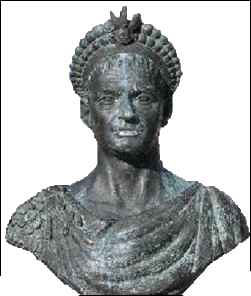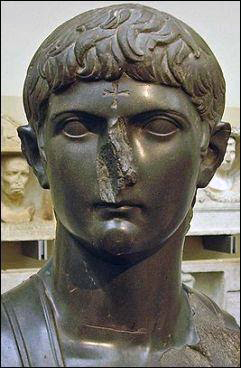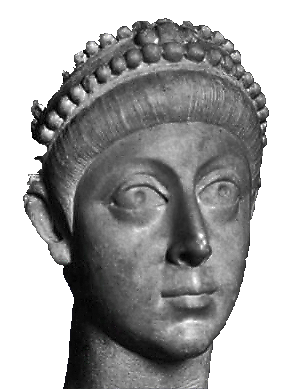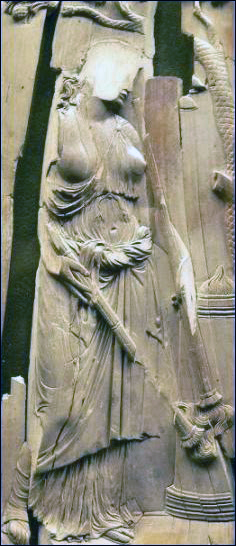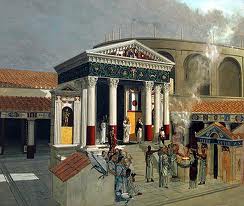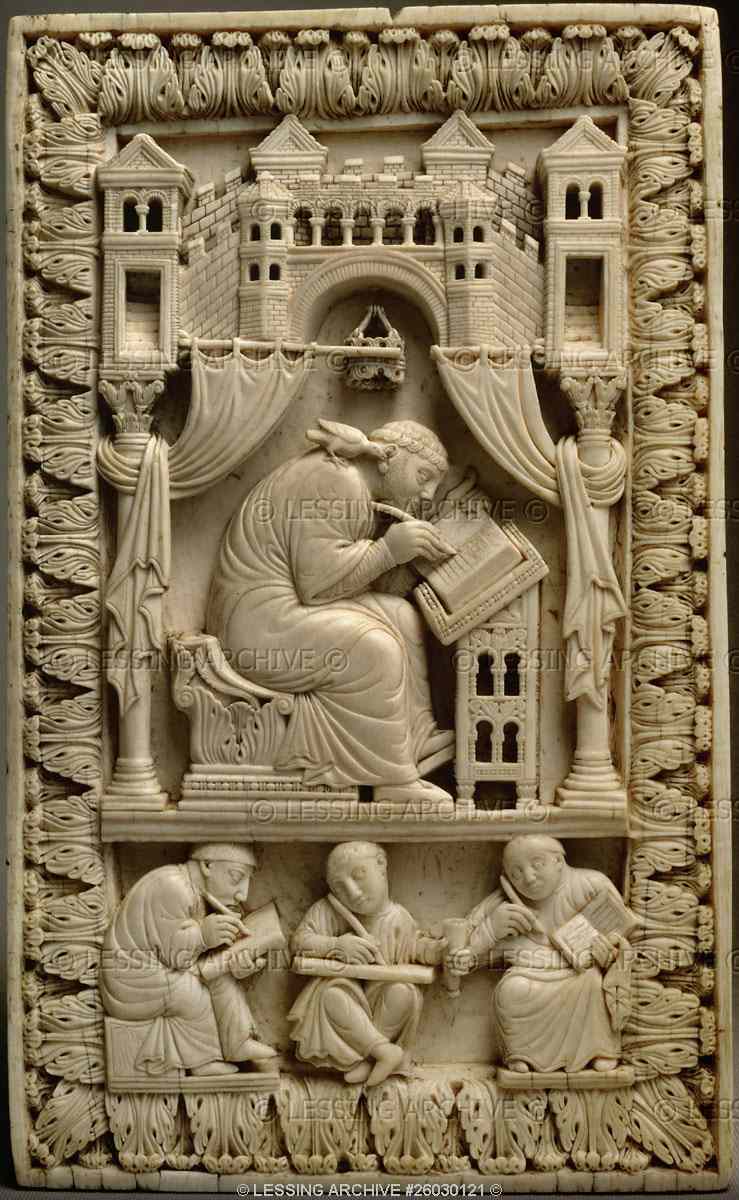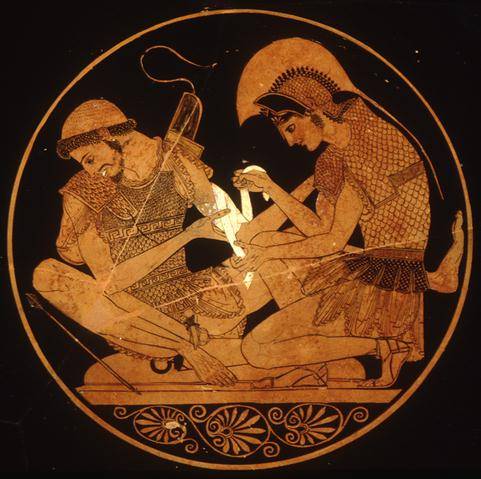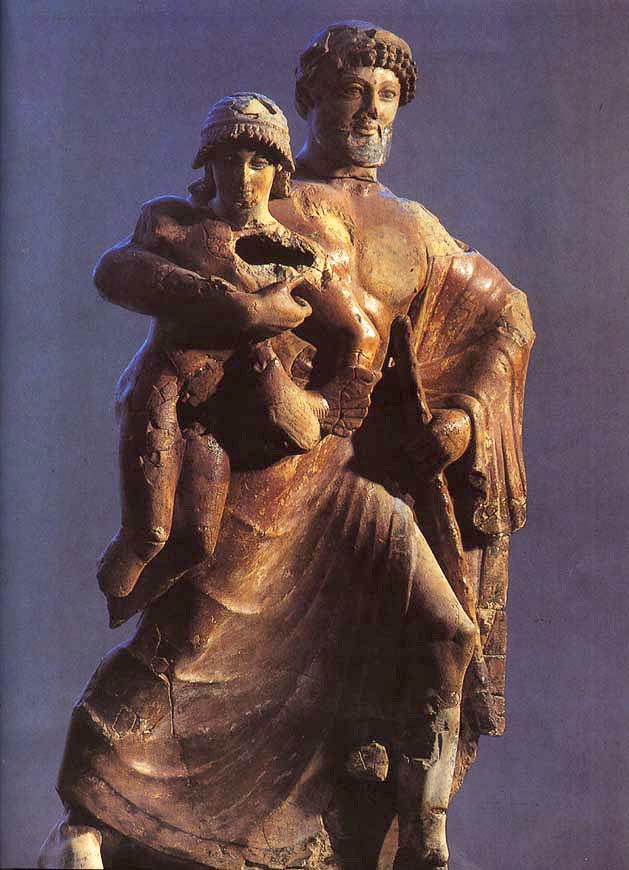The God who unleashes and liberates
by Manu Rodríguez
You speak of the West, of the decline of the West, of the end of West… But it is the White West the only in danger of disappearing. The White West, the Aryan Nations: Europe and Magna Europe. Our West: our strength, our efforts, our work. Multiculturalism and immigration are causing the dissolution of our Nations. Our countries are filled of sub-Saharans, Asians and Africans (the most numerous), and of Chinese… In due time we will be a minority in our own lands.
Aryan Nation? We are not yet an Aryan Nation. We cannot constitute a “League” of Aryan Nations. We cannot come to our own defense. We are bound, and unarmed. First we have to free ourselves. For millennia we have been alienated peoples, alienated nations. The Jewish-Christian-Muslim and Semitic tradition dominates us completely. They are, ultimately, Semitic traditions instructing us and conforming us (or rather deforming and destroying us) since we are born—from the cradle to the grave.
We are not ourselves; we cannot speak out as long as we try to speak from that space: the Jewish-Christian-Muslim milieu. Within these traditions we are not ourselves, we disappear.
* * *
Christianity was for us a Horse of Troy, a poisoned gift, for us. It was the weapon used by the Jews to softly introduce their world into our minds and hearts and to assert their cause (they’re the “chosen” people); to undermine our confidence in ourselves and sow the doubt and bad conscience about our traditions; to dissolve our cultural identity, divide us, weaken us, deconstruct us. This was the strategy of Saul, the Apostle of the “gentiles.” Yes, it had its risks and disadvantages for themselves, but it was a worth try. They achieved their purposes. Ultimately, the Jewish tradition was imposed on our peoples.
 With the New Testament came also the Old Testament, the whole Jewish world—which ended up devouring us. The “good news,” the “gospel” was the “luminous” lure. Christianity is a Judaism for the gentiles: a half-Judaism, a decaffeinated Judaism, a castrated and castrating Judaism; an ideology for slaves, servants, and subordinates.
With the New Testament came also the Old Testament, the whole Jewish world—which ended up devouring us. The “good news,” the “gospel” was the “luminous” lure. Christianity is a Judaism for the gentiles: a half-Judaism, a decaffeinated Judaism, a castrated and castrating Judaism; an ideology for slaves, servants, and subordinates.
The anti-Judaism or criticism of the Jews in the gospels, or Saul, is a smokescreen. This is what managed to introduce the new Christian order in our European lands: a new and unique god, the god of the Jews; a new and unique sacred land, Israel, the land of the Jews; a new and unique sacred history, the Jewish scriptures (Jewish writings and Judeo-messianic—Christian—writings); a single sacred language (Hebrew); a single chosen people… And let us not forget that “salvation comes from the Jews” (in the New Testament). Meanwhile, our people, lands, histories, and identities were desacralized, desecrated, and banned (our ancestors, temples, sacred places, various traditions, books…).
The Christianization of our people ended up destroying our ancestral identities, our genuine signs of identity, our collective ancestral memory. It was a violent process of acculturation and enculturation. There we died—there our peoples were killed, or transformed into something else. There our alienation began, our alienated life, our alienated history.
After the several Christianizations our people ceased to exist. No more Greeks, Romans, Goths, Gauls, or Slavs: for these peoples no identity was left other that being Christians or not. The various not yet Christianized peoples of Europe were made to “disappear,” they were agglutinated and blurred out under the term pagan, which means rural or rustic. The term referred to Roman peasant cults, but also had connotations for the uneducated, the not cultivated or civilized. It was (and is) a derogatory term. Like the term goyim, also derogatory, applied to us by the Jews (or the kafir which would use the Muslims—the other Jewish offspring, the second spawn).
Incidentally, the holy book of the Jews (and Christians) is a real protocol of action regarding the Other, the goyim, the peoples, the gentiles: a strategy of domain by the Jews (and Christians) against the Other. It points out, for example, the technique of slandering and the undermining of the towns or cities’ morale, which destruction or conquest is intended; it’s about what they envy, lust after or fear: Egypt, Canaan, Jericho, the Philistines, Sodom, Babylon… Rome! (the whole West today). Furious anathemas they throw on them. See the picture they make about their populations, their customs (their decadence and everything else). It is libel and slander of the other people. The Muslims have in addition to this a supplementary text, the Koran. Both in the Old Testament and in the Koran literal and allegorical directions are prescribed to conquer, destroy, or simply how to treat the goyim or the kafir and the follow-up steps. They are “arts of war,” strategy manuals for every time and place. Such strategies of control are included in what is properly defined as “group evolutionary strategies” (MacDonald).
We, the Aryan peoples, the White West, lack such patently manifest “group evolutionary strategies” (the Semitic way). We are not, however, lacking of advice and warnings, wise judgments, illuminated books; wisdom. We also have our myths, legends, and wonderful stories, the old pre-Christian story which provides us with the weapons and strategies we need; our own language, our heroic and epic language. They belong to the time when we had group consciousness, when this feeling of belonging to a people was still alive (early Romans, Germans, Celts…); the story of threats, for example, that affects the group or the entire kingdom. Those are stories in allegorical or figurative language, and could be applied in appropriate circumstances.
The evolutionary strategy of Jews, Christians, and Muslims exists, therefore, in their sacred books. They do not need other “protocols” or roadmaps. Such sacred texts are naturally untouchable. The supremacist (megalomaniac) or cruel side implicit and explicit in these texts is usually explained away (because of their archaic and religious nature, they say). Moreover, these “holy” books are universally praised for their humanity and high morals. In certain circles they are considered no longer fashionable, innocuous, harmless.
There can be no greater confusion regarding this issue—no more self-deception. We cannot blame the enemy for his cunning. If their narratives are accepted (if we play their game) their supremacy and our submission are accepted as well. It’s that simple. And this is true for the Jewish, Christian or Muslim narratives. “I give eternal life if you leave everything you have (or you deny yourself) and follow me.” In this manner they present their claims. And so they depart, well equipped of bait, fishing and capture to see who bites, who falls. So they spend their days and survive. We cannot blame the cheater because we, or our ancestors, have fallen into their traps. In our power lies not to be tricked. It was us, the naive, the well-intentioned, the unwarned, confident and silly whites the only responsible for our clumsiness.
It must be said that in this Fall we lost our light and our freedom. That step was a mistake, a mistake that present and future generations must repair.
We were naive, stupid, indifferent, complicit, coward, venal. Everything happened in that Fall, that death, that oblivion. It is good to keep memory of this painful Fall. The cheater is not a thing of the past, he’s still among us.
* * *
Since the last century we have had a new batch of Jewish instigators (Adorno, Marcuse…) and, more recently, Muslim (Said, Rauf, Ramadan—Islam continues, since its inception, the strategy of the Jews and they even have improved it). Their drive is to criticize, censure, and undermine the economic, political, social, or cultural foundations of our contemporary world and at the same time advocate a multiracial and multicultural society in our lands. (With which right do these aliens propose any social model in our lands?) They bring both the disease and the remedy; they both diagnose and prescribe as the old Christians did (with their original sin, which affects all mankind and their restoring baptism) or the modern psychoanalysts (with their unhealthy complexes, more or less innate and universal, and their corresponding “analytic” cure): the machinations and artful trickery of the enemy. Today as yesterday. These misérables are again among us with impunity and with their venomous narratives staining, sickening our past and our present; conditioning, and endangering our future with their insidious socio-cultural proposals, their malicious social therapies (with renewed hooks).
The brand new testament that these new apostles of our gentility preach (newly reclaimed after the fall of the Ancient Regime) is a new attack adapted to the times, a new threat; a new prison, a new shame and a new exile they have prepared for us.
They are building for us a West (a home) that’s vague, diffuse, fuzzy; of open borders, tolerant, pluralistic; multiracial, multicultural, cosmopolitan. A utopia, they tell us, a paradise. They are building our ruin, our hell; they’re reducing our vital space; destroying us slowly, coldly, and systematically. In our own home, these guests.
It is a collective brainwashing what we suffer under these new narratives of “salvation”: narratives from our governments, media, and educational institutions. They have managed to capture the attention and sympathy from the population (the “good” ones, the well-intentioned Left). There are also the miserable converts (the convinced, the deceived, the confused, the unconscious traitors). Both become part of the ranks of the enemy in war against their own race, their own people, and their own cultural traditions: damaging, doing wrong, hurting their own. These rouges know well where to cast the nets. Now as then.
It is a multiple and highly dangerous attack what we suffer today—demographic and ideological. Those are the last battles of a cold war that will soon become hot and which purpose is none other than ending the ancestral, cultural and racial homogeneity of our States, nations or peoples. Undermine our continent, our ancient and millenarian human geography. Destroy us racially and culturally, turning us into a minority in this land of ours, in the land of our ancestors. It is the perfect revenge, the consummate revenge. Finally dispossessed of our lands and our skies we will have no other skies than the Semitic; we will lose everything.
We are disadvantaged before this offensive. Feet and hands bound; morally disarmed, with borrowed, alien, enemy language. The Christian or pseudo-Christian language that is imposed on us (all men are equal, universal human rights, you must tolerate and suffer, love the enemy…) invalidates us, paralyzes us, mutes us, stops us. With this language we shall never defeat our enemies, those who seek our evil. It is a language forged and still shaped for us by the enemies of our being, the “moral” weapon that they leave us to disarm us absolutely. It is the art of transforming wolves and bears into kids and lambs, the poisoned gifts of the enemy.
We cannot reproach the enemy for his strategy or will to power. He does what he can. I would only say that our strategy and our will to power, our light and our will of future must far exceed that of the enemy. Liberate us, recover us, purge us. Get rid of ’em all! Sweat them like a bad fever! Expel them!, throw them out of us; from our lands, our lives. Purify us. Deliver us from our evil! Heal.
It will not be so much an exit, an exodus, as an expulsion: a purification.
* * *
Zeus is the god father of our peoples, Zeus / Dyaus. All Aryan peoples call upon him. Zeus is the god of our genius. It is a diurnal, bright, solar god. We love the clarity, truth, justice, wisdom.
We also love drunkenness, divine intoxication: what brings joy. Zeus / Dyaus is our Soma, our Dionysus, our Balder, our Lugh. We owe him the clarity without shadow, the vigor, and the enthusiasm.
We are a people in motion, never still, never stopped. Always forward, always in progress, advancing, going. Behind we have many stories, many rebirths, many auroras. We are a people that are reborn.
We are also a people with memory, a people that does not forget the past, the former transformations since the Paleolithic to the present day: a people with a memory connected to all of our past lives. The people with the longer memory are the people with the longest future.
That memory is received as a holy gift. It is the memory of my people, of all the avatars, of all time. It is the heavens of my people; the spiritual, symbolic heritage of the Aryans. Only my people have the right and the privilege to receive this legacy. No other has the right to our history, our memory, or our heaven.
Europa Aryana. The mother earth of the European Aryans, the metropolis; our sacred land. The land of our ancestors and the spirit, the genius of our ancestors. This we must protect and bequeath for the future.
The present and future generations of Aryans have a serious responsibility. This is the harshest hand we have been dealt, the most needed for the minds of us all. In this trance either everyone is saved or none. We must reconstitute the Tree in its fullness. We cannot let down any of our peoples in the hands of the Semites (Jews, Christians or Muslims). All of us have to leave this night, this death, this abyss where we have been detained for hundreds of years.
My friend: in combat light and freedom meet. I wish you clarity, vigor, and enthusiasm. May the god who unleashes and liberates be with us all.

